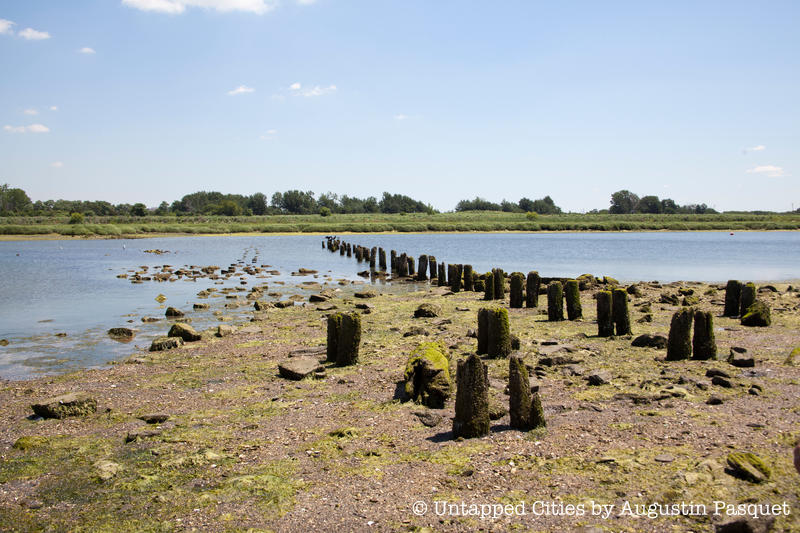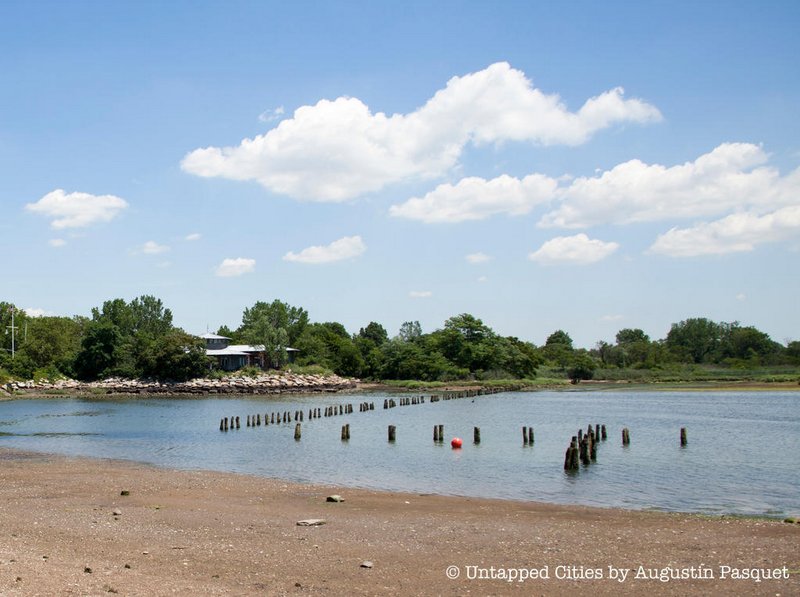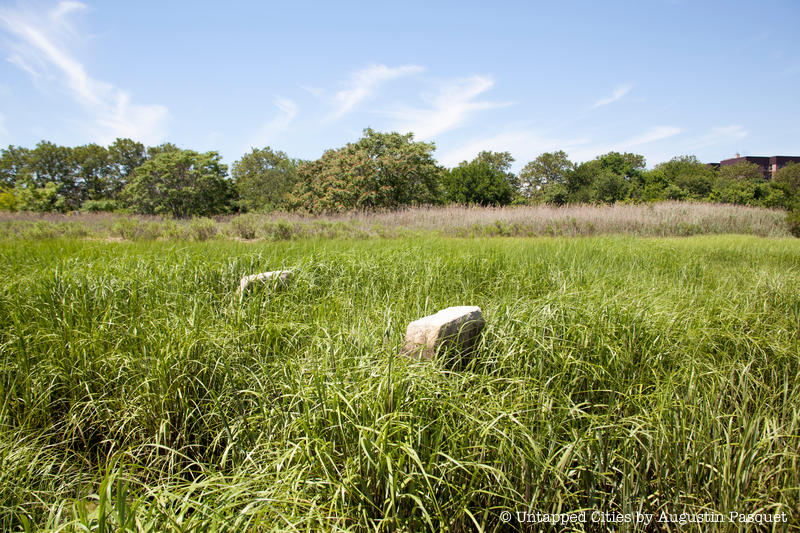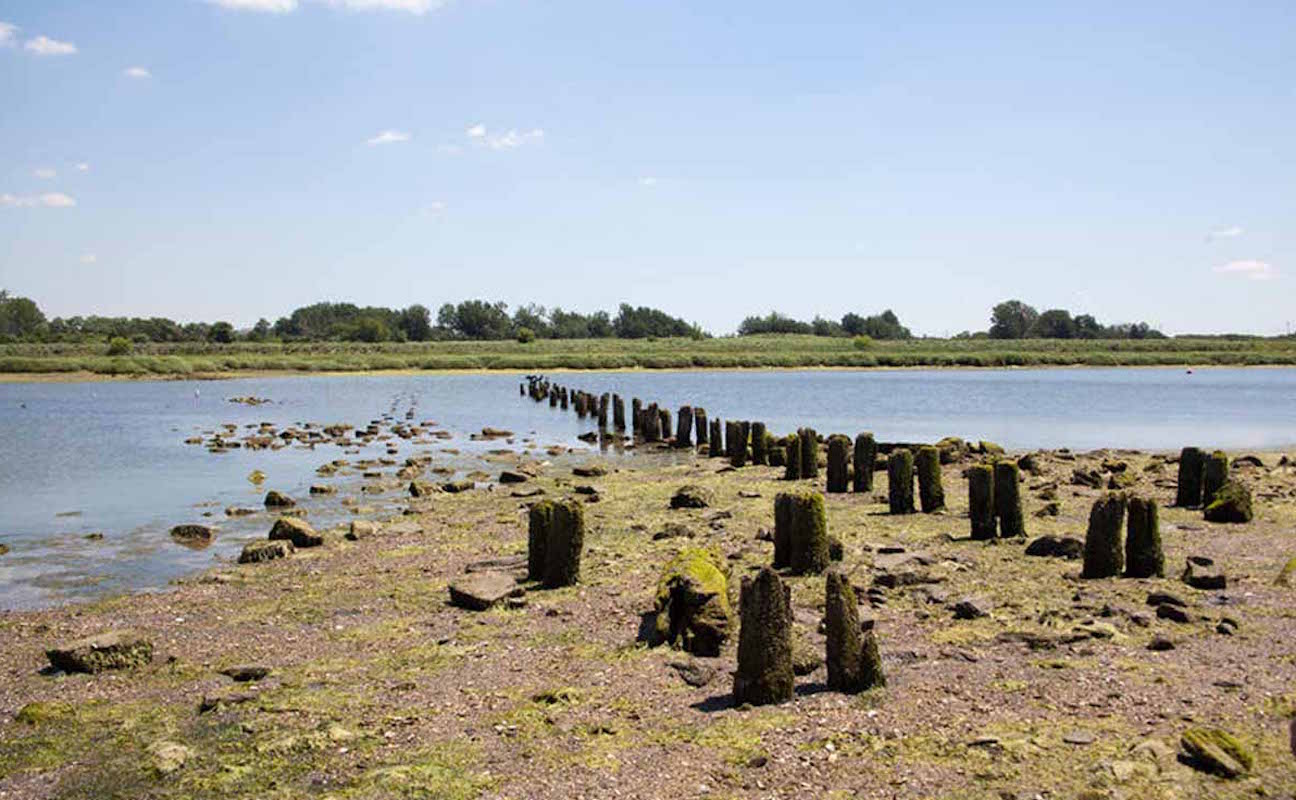This summer, Alyssa Loorya, urban archeologist, the founder of Chrysalis Archaeological Consultants and a Brooklyn College professor, is getting her hands dirty with her students. As part of Loorya’s course, called Archaeological Field Work: Site Supervision, they’re digging, mapping, surveying, and excavating historical remnants in Marine Park‘s Gerritsen Creek.
The first summer archaeological course of this kind was held in 1997. The New York City Department of Parks and Recreation hired Loorya and several others to excavate the area, in order to confirm historical documentation about the area’s land formation. The above video, courtesy of Brooklyn College Summer, shows footage from the fieldwork.

Chrysalis Archaeology helps guide developers through historical and architectural requirements as part of a process sometimes called “urban archaeology,” and Loorya has been behind studies of the burial vaults under Washington Square Park, the renovation of the High Bridge, the construction of Fulton Center, and more. They’re the ones that institutions like the MTA and Con Edison go to before they start work, and Chrysalis determines whether any archaeological treasures will be put at risk.
She also serves on the board of the Lott House Preservation Association, which maintains the Marine Park house that was almost certainly a stop on the Underground Railroad. They plan on converting the house—filled with treasures like vintage Saks Fifth Avenue boxes, newspapers from 1812, porcelain doll’s heads, cookbooks full of oyster recipes, and rusted farm equipment—to a museum.
Marine Park, just off the Avenue U subway stop, is technically Brooklyn‘s largest park. It was actually supposed to be a theme park to rival Coney Island, but the park was never built, and this allowed the natural landscape to remain virtually untouched. Out here, salt marshes abound and animals like horseshoe crabs, cottontail rabbits, and oyster toadfish flourish.

The area was formed when, over the past five thousand years, ocean currents stemming from melting glaciers swept layers and layers of sand into a tangle that eventually congealed into solid ground. Loorya’s class will be digging into this history, deciphering hieroglyphics of the past written on the earth.

It was said to be the largest Native American site in Brooklyn, and was populated by the Canarsee Tribe, who used the area for hunting and limited farming. Part of the purpose of the excavation efforts has been to understand Native American history more extensively; most information prior to the project was studied from a European bias.
Some of the park’s amenities, like its sports fields, playgrounds, and running path, were built on an ancient Native American burial ground. Gerritsen Creek was named after the Dutch family who built America’s first tide-powered grist mill here in the mid-1600s, and soon Marine Park became a hub of European trade. There was also a never-built plan to covert this area into a grand park and athletic facility planned for Marine Park. The never-realized design by Charles Downing Lay even won the silver medal at the 1939 Olympics in Berlin when the event had a town planning competition.
Today, over half of Marine Park belongs to the National Park Service, and much of it looks like the picture of American suburbia. Now, Loorya and others are taking a look back into the past to understand the full story.
For more information, check out the top 10 secrets of Brooklyn’s Marine Park and this video, which offers an exclusive look inside Marine Park’s historic Lott House. For more on archaeology, check out this article on 5 notable archaeological sites around Manhattan.






